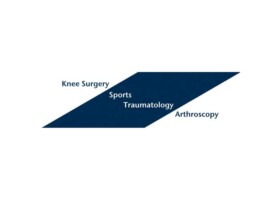
Authors:
Frank Martetschlager, Arne Buchholz, Gunther Sandmann, Sebastian Siebenlist, Stefan Dobele, Alexander Hapfelmeier, Ulrich Stockle, Peter J. Millett, Florian Elser, Andreas Lenich
Abstract:
Acromioclavicular joint dislocation represents a common injury of the superior shoulder suspensory complex comprising different injuries to the acromioclavicular and coracoclavicular ligaments. Most commonly, the mechanism of this injury is a direct force from a fall on the lateral aspect of the shoulder with the arm in an abducted position. Thereby, different forces are responsible for a different type of injury. These injuries have been classified by Rockwood into type I through VI. Typically, type I and II injuries are treated non-operatively, and the vast majority of these patients return to pre-injury status. For acute type III injuries, the favourable treatment is still controversially discussed in the literature, while clinical studies showed similar results for surgical and non-operative treatment. However, in young and active patients as well as high-level athletes and manual workers, surgical intervention is often preferred to allow more rapid rehabilitation and to enable an early return to daily activity. In terms of acute high-grade injuries, typically types Rockwood IV through VI, most authors recommend surgical treatment, as non-operative treatment may lead to residual symptoms like pain, stiffness or decreased range of motion and weakness.
The literature is replete with surgical techniques to address acromioclavicular dislocations, including ligament reconstruction or transfer, augmentation with absorbable/non-absorbable sutures or tendon grafts as well as with rigid materials like plates or CC screws. Since arthroscopic surgery has highly advanced in recent years, several minimally invasive techniques with suture anchors or suture buttons have been invented. Furthermore, combinations of these techniques are also described in the literature.
However, despite modern minimally invasive and arthroscopically assisted treatment options for anatomic reconstruction of the coracoclavicular ligaments, there is still no well-defined gold standard treatment for acromioclavicular joint separations.
Since 1972, when Weaver and Dunn published their popular technique, several biomechanical studies have reported on the latest fashion of AC joint augmentation providing an increasing stability of the reconstructed complex and finally equal or even more stability than native ligaments.
Therefore, it seems that future belongs to recently described, minimal invasive techniques, using anchors or buttons with or without tendon grafts, even though long-term results that might point out unknown complications are still missing. To date, open techniques like reconstructions with absorbable or non-absorbable suture cerclages are still in use for acute AC joint separations and show reliable and good to excellent clinical results, even though slight re-dislocations are reported.
The purpose of the current study was to evaluate the vertical stability of our AC joint reconstruction technique for acute AC joint injuries, using coracoclavicular PDS cerclages and an additional acromioclavicular PDS cerclage augmentation. We hypothesized that this technique provided sufficient vertical stability to prevent a vertical re-dislocation during the healing process.
For the complete study: Acromioclavicular and coracoclavicular PDS augmentation for complete AC joint dislocation showed insufficient properties in a cadaver model
